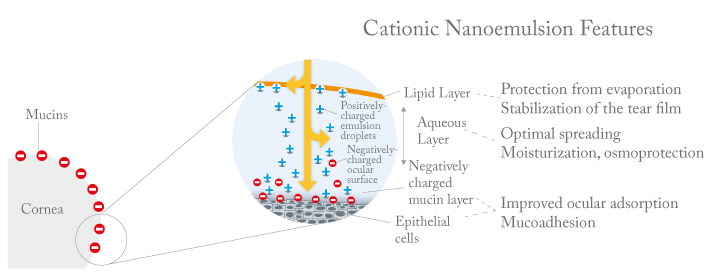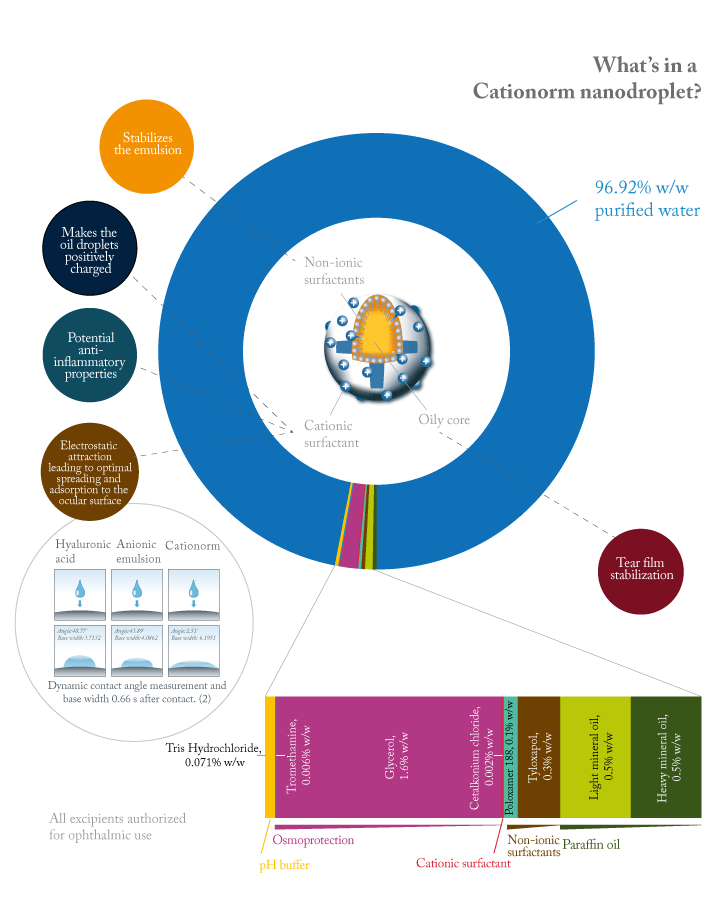
Dry eye disease is a common disorder, that’s estimated to affect between ten and thirty percent of patients aged over fifty years (1). Many treatment options exist, but almost all come in one form: topical eyedrops.
Historically, formulating those eyedrops has been a problem (2). Making an eyedrop that can deliver effective and long-lasting dry eye symptom relief to the surface of the eye has been a particular challenge. Aqueous formulations wash away quickly and cannot be used as a vehicle for lipophilic drugs. Emulsions can be; as surfactants can be used to bind together the hydrophilic with hydrophobic oil-based vehicles. However, the overall electrostatic charge of the emulsion matters. Mucins on the surface of the eye are negatively charged – so anionic emulsions will be actively repelled. By the same token, cationic emulsions are actively attracted, dramatically increasing retention time and improving the spreading of the emulsion across the eye surface.
The most effective emulsion coverage requires nano-sized droplets. As the droplet size reduces, the surface area to volume ratio increases, meaning a greater total surface area of the emulsion is exposed to the ocular surface. In essence, the eye sees more of the eyedrop this way. But there is a challenge in developing this technology: the list of excipients that are acceptable to use in ophthalmic eyedrop formulations is painfully short. Despite those potential setbacks, researchers from Santen’s Novagli Innovation Center in Evry, France have managed to make that cationic nanodroplet vehicle: the Novasorb technology.
The vehicle alone is being used therapeutically today in Europe, and is being marketed by Santen under the name Cationorm. Notably, Cationorm has many properties that are protective of all three layers of the tear film: the oily core protects and replenishes the lipid layer and reduces evaporation; the glycerol present has an osmoprotective effect on the aqueous layer, and the eyedrops are held there for longer by electrostatic attraction.

References
- “The Epidemiology of Dry Eye Disease: Report of the Epidemiology Subcommittee of the International Dry Eye WorkShop (2007)”, Ocul. Surf. 5,93–107 (2007). F. Lallemand et al., “Successfully Improving Ocular Drug Delivery Using The Cationic Nanoemulsion, Novasorb”, J. Drug Deliv., 2012: 604204 (2012).
